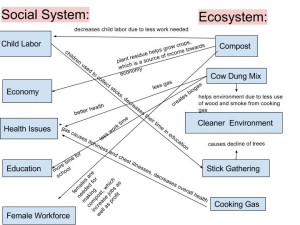- In 175-200 words, how would you categorize the level of biodiversity in your own hometown? In regards to this specific level, what factors cause this?
I live in Belmar, New Jersey. I would consider my hometown to have an above average level of biodiversity. The area I live in consists of an abundant amount of farms, protected parks, and fulfilling amount of trees, so we are fortunate enough to be provided with such a diverse amount of trees, birds, plants, animals, and insects. Because of our abundant amount of lakes, forests, and open farm fields during changing climates and seasons, we are granted with such a high range of different species. However, what makes our level of diversity above average is the fact that we live a few blocks from the beach, providing our town with a marine biodiversity as well. Unfortunately, due to the excessive amount of overfishing and water mobile entertainment, many of the past fish we used to have are now either extinct or becoming endangered. Our local restaurants have taken the anthropocentric advantage of profit, using the marine life as a popular fish dish for both local and out of state visitors. Belmar used to have a much higher level of biodiversity, but these specific factors of human activity have caused our town just to be slightly above average.
- As we are well aware, species are being either endangered or extinct on a daily basis. In 175-200 words, please choose one type of species and explain the reasoning behind the specific extinction/endangerment.
One of the most respected birds in our country is unfortunately endangered in the state of New Jersey; the bald eagle. The main reason behind their high decline is persecution. Eagles are sensitive to human disturbance and will abandon their nest sites if people encroach on the area during the nesting season. Since Belmar is growing in population every day, construction workers need to increase the amount of trees being cut down so we can provide a home for our citizens. Unfortunately, cutting down each tree is cutting down the home of the bald eagle. The inability to have a home to live in gives the bald eagle the inability to nest and produce more babies. Though biologists are currently working with landowners to protect their habitat as well as the state’s land use regulations, New Jersey is guilty in regards to to bald eagles dying on impact by electrical wires, followed by the impact of widespread use of the persistent pesticide DDT. Thankfully, the ban of DDT combined with restoration efforts by biologists within the ENSP increased the number of New Jersey bald eagles to 146 active pairs in 2014.
- In your personal opinion, explain in 200-250 words upon ways/ideas we can protect the future of biodiversity.
In order to protect the future of biodiversity, there are several different ideas our township can pursue. Specifically for Belmar, one of them is to make stricter regulations in regards to water mobiles and overfishing. Though jet skiing and wave running are two popular water activities during the summer for tourists that produce most of our profit, the excessive amount of oil entering the ocean releases dangerous toxins and poisons to our fish. If we set certain days to use these devices or a specific number of minutes in a day, we could save so much potential to our ocean and reduce the amount of oil entering the ocean. In addition, Belmar needs to set a law upon how much we are allowed to fish. Even if this means a specific size of a fish we are allowed to keep or let go back into the water, we could save the lives of so much of our marine life. My hometown also consists of a large capacity of people, even though our town is very small. This causes construction workers to cut down trees to fit more apartment buildings into our community. If we preserved specific areas and turned them into protected parks or land, we could save a significant amount of forests, which is potentially saving a high amount of birds, insects, and even the possibility of plants that could be used for the future of a kind of medicine to a specific cure.


